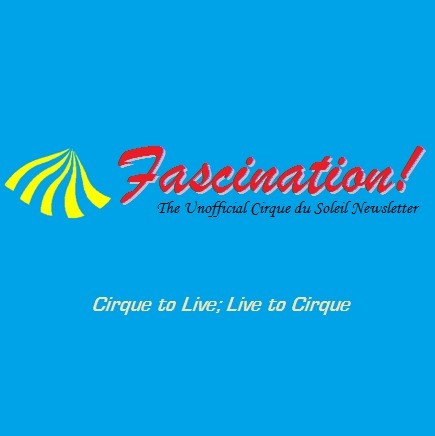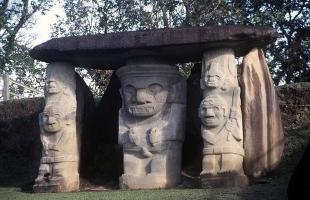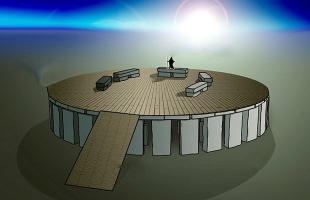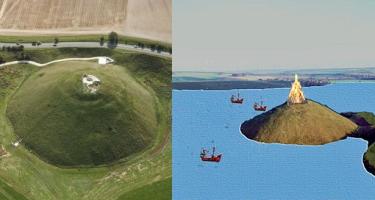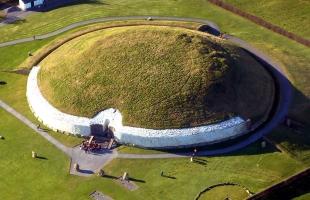Copy Link
Add to Bookmark
Report
AIList Digest Volume 8 Issue 118

AIList Digest Thursday, 3 Nov 1988 Volume 8 : Issue 118
Announcements:
18th ASIS Mid-Year Meeting
2nd IFIP/IFAC/IFORS Workshop on AI in Economics and Management - Singapore
Fifth Israeli Symposium on AI
AISNE 89
Symposium on AI Research for Exploitation of Battlefield Environment
----------------------------------------------------------------------
Date: Mon, 31 Oct 88 12:08 PST
From: Christine Borgman
<IIN4CLB%OAC.UCLA.EDU@MITVMA.MIT.EDU>
Subject: 18th ASIS Mid-Year Meeting
MEETING ANNOUNCEMENT: Please forward to anyone who may be interested.
Submitted by Christine Borgman, Graduate School of Library and
Information Science, UCLA, Los Angeles, CA 90024, 213/825-1379.
IIN4CLB@UCLAMVS
Call for papers and session proposals
THE USER INTERFACE
1989 American Society for Information Science Mid-Year Meeting
May 21-24, 1989, San Diego
THe 18th ASIS Mid-Year Meeting, May 21-24, 1989, in San Diego,
California, will present the state-of-the art in the design of
interfaces for information retrieval systems, online public
access catalogs and other information technologies. We will
identify major tendencies, trends, influences, and approaches
in interface design and discuss their significance for the systems
of the future.
Particular focus will be placed on the major activities involved
in the design of interfaces, such as tools and techniques for
interface design, user models and their application, and the
process of task and interaction analysis.
Program ideas and contributions are invited in all related areas.
Discussions and explorations of existing interfaces, particularly
those that imply lessons for other designers, are also welcome.
Major themes in *The User Interface*:
Tools
- Rapid prototyping systems
- Design environments
- User interface development and management tools
Natural Language Interfaces
- Interfaces that allow natural language input by users
Artificial Intelligence Approaches
- Expert systems and knowledge-based approaches
Interface styles
-Command, menu, or direct manipulation: their uses and advantages
Adaptive-Adaptable Systems
- Systems or systems features that are user-modifiable or that adapt
to specific users
Usability
- Evaluation and testing of interfaces and interface ideas
Guidelines and Standards for Interfaces
- International, national, or in-house
Interested presenters are encouraged to expand on any of these theme
ideas. Acceptance will be based on the relevance of the topic,
substantive nature of the presentation, and clarity.
Proposals should take the following form:
Contributed papers: Submit the title and a 250-word abstract
Demonstration proposals: Submit a written description of a
demonstration of a particular system related to the meeting topic.
Include a statement of the equipment requirements to support the
proposed demonstration.
Panel discussion proposals: Submit a one-page description of a
topic for a panel discussion and a list of possible speakers to
address the topic.
For fullest consideration, all proposals should be submitted by
November 21, 1988. Notification of acceptance or rejection will
be made by January 3, 1989.
All proposals and inquiries should be submitted to:
Martin Dillon, 1989 ASIS Mid-Year Meeting
Director, Office of Research
OCLC
6565 Frantz Road
BITNET: MJD@OCLCRSUN
ASIS Special Interest Groups wishing to sponsor SIG programs should
contact Debora Shaw, Indiana University, at SHAW@IUBACS.
ASIS SIG/UOI (User Online Interaction) is interested in co-sponsoring
sessions. For further information contact Thomas Martin of Syracuse
University at TMARTIN@SUVM.
------------------------------
Date: Tue, 01 Nov 88 11:06:47 SST
From: Joel Loo <ISSLPL%NUSVM.BITNET@MITVMA.MIT.EDU>
Subject: 2nd IFIP/IFAC/IFORS Workshop on AI in Economics and
Management - Singapore
An advanced program for the conference:
2ND INTERNATIONAL
IFIP/IFAC/IFORS WORKSHOP ON
ARTIFICIAL INTELLIGENCE IN
ECONOMICS AND MANAGEMENT
SINGAPORE
January 9 - 13, 1989
Sponsors
IFIP (International Federation for Information Processing) (Main Sponsor)
IFAC (International Federation of Automatic Control)
IFORS (International Federation of Operational Research Societies)
In Cooperation with
AAAI (American Association for Artificial Intelligence)
ACM-SIGART (Association for Computing Machinery
-Special Interest Group for Computer Architecture)
IEEE-CS (Institute of Electrical & Electronics Engineers Computer Society)
IPSJ (Information Processing Society of Japan)
SEARCC (South East Asia Regional Computer Confederation)
Supporters
IBM Singapore Pte Ltd
Digital Equipment Singapore Pte Ltd
Texas Instruments Singapore P
Organizer
The Institute of Systems Science
National University of Singapore
Co-Organizer
SCS (Singapore Computer Society)
GENERAL INFORMATION
For registration and other information, please contact:
Mrs Vicky Toh
Institute of Systems Science
National University of Singapore
Heng Mui Keng Terrace
Kent Ridge
Singapore 0511
Telephone: 772-2003 / 772-2096
Telex: ISSNUS RS 39988
Telefax: 778-2571
Bitnet: ISSVCT @ NUSVM
FEES
Tutorials (January 9 -10) US$200.00
Workshop (January 11 - 13) US$200.00
WORKSHOP PROGRAM (January 11 - 13, 1988)
Key note speech will be delivered by Professor Herbert Simon,
Nobel Laureate, Carnegie-Mellon University
ORGANIZATIONAL STRUCTURE & STRATEGY
1.Michael Masuch University of Artificial Intelligence
& Amsterdam in Organizations :
The NETHERLANDS Complementing the Garbage
Perry J LaPotin Dartmouth CollegeCan Model Organizational
USA Choice
2.Michael PrietulaCarnegie-Mellon Configuring AI Systems to
Peng Si Ow & University Organizational Structure:
Wen-Ling Hsu USA Issues Examples from
Multiple Agent Support
3.Borge Obel Odense UniversityEvaluating Organizations
& DENMARK Using An Expert Systems
Richard M BurtonDuke University
USA
4.Gene Sakamoto IBM Los Angeles SPARK: A Facilitative
Patricia Gongla,Scientific Systems Identifying
R Clay Sprowls Center Competitive Uses of
& Patricia Information Technology
Goldweic
BANKING
1.L F Pau Technical Applications of
University of Artificial Intelligence
Denmark in Banking, Financial
DENMARK Services and Economics
2.Mariani Carisma S R L CR.E.S. (CRedit Granting
Francesco ITALY Expert Systems) - How
Roda Claudia to grant credit using
& Valeriani frames
Giuliano
3.R Bhaskar & IBM Thomas Qualitative Reasoning in
& Seshashayee S J Watson the Commercial Lending
Murthy Research Center Decision: The Role of
USA Naive Mathematics
4.Jean Roy Universite Laval A Clever Screening for
CANADA Commercial Loans
Applications
5.Michael J Shaw University of Applying Inductive
James A Gentry Illinois - Learning in a Evaluation
Champaign/Urbana Decision Support System
USA
6.Nancy A Digital EquipmentTowards a Domain specific
Broderick & Corporation Tool for Underwriting
Peter Politakis USA Commercial Insurance
FINANCE
1.Lin Zhangxi Economic RASF - Automating Routine
Information Analysis of Financial
Centre for Data
Fujian Province
CHINA
2.Soumitra Dutta University of An Artificial
& Shashi California Intelligence Approach to
Shekhar Berkeley Predicting Bond Ratings
USA
3.Irene M Y Woon Aston University Qualitive Modelling in
& Peter UNITED KINGDOM Financial Analysis
Coxhead
4.Y Y Chan, LaTrobe Port-Man - An Expert
T S Dillon University System of Portfolio
& E G Shaw AUSTRALIA Management in Banks
5.Noberto A TorresEscola de Expert Modelling System
Administracao de for Futures Markets
Empresas de Sao Operations
Paulo BRAZIL
6.B J Garner & Deakin UniversityA Canonical Graph Model
E Tsui AUSTRALIA for Personal Financial
Planning
MANUFACTURING
1.Phaih-Lan Law Digital EquipmentManaging AI Technology
Mitchel Tseng Corp USA Transfer Manufacturing
& Peter Ow Digital EquipmentApplications
Intl Ltd
SINGAPORE
2.Juha E Hynynen Helsinki Knowledge-Based
University of Coordination in
Technology Distributed Production
FINLAND Management
3.Mitchel M Tseng Digital EquipmentIntelligent Integrated
& Dennis Corp Support Systems for
O'Connor SINGAPORE Manufacturing Enterprise
MARKETING
1.Giorgio M IFOA, Reggio Applications for
Gandellini Emilia & Artificial Intelligence
Macerata in Marketing Decision
University Support Systems
ITALY
2.Alan Tse Massey UniversityA Prolog-Based Expert
NEW ZEALAND System for Price Decision
Making Under Incomplete
Knowledge
3.C Apte, IBM Thomas J Utilizing Knowledge
J Griesmer Watson Research Intensive Techniques in
S J Hong Center USA An Automated Consultant
M Karnaugh for Financial Marketing
J Kastner,
M Laker &
E Mays
4.R S Dhananjayan Bharathia Application of Expert
VS Janaki Raman University System Techniques for
& K Sarukesi INDIA Analyzing Firm's Fall in
Market Square
PLANNING & SCHEDULING
1.Chae Y Lee Korea Institute An Intelligent
of Technology Classification and
KOREA Formulation of Network
Flow Square
2.Elisabetta Tesi Olivetti Expert Systems for the
& Roberto Meli ITALY Project Management of
Information Systems
3.Mohammed I King Fahd A Multi-Level Mani-
Bu-Hulaiga University of Technique for Structuring
Petroleum & Ill-Structured Decision
Minerals Problems
SAUDI ARABIA
4.Leong Yit San Rubber Research The Rubber Research
Institute of Institute of Malaysia
Malaysia Environmax Planting
MALAYSIA Recommendation Expert
System
USER INTERFACE
1.Hwee Tou Ng University of A Computerized Prototype
Texas (Austin) Natural Language Tour
USA Guide
2.Toshiro Bando The Sumitomo Texpert
San Bank, Ltd
JAPAN
3.Peter Mertens Universitat Derivation of Verbal
Erlangen-Nurberg Expertises from
FEDERAL REP OF Accounting Data
GERMANY
4.Dvid Kendrick University of A Production Model
(Austin) USA Construction Program
ECONOMICS
1.Zhongtuo Wang Dalian UniversityApplication of DSS in the
of Technology Regional Developing
CHINA Strategy Analysis
2.Edward J KrowitzEconotech An Expert System to
USA Analyse Balance of
Payments Problems
3.Odile Palies University P Et Knowledge Bases for
Francois Libeau Curie Hendyplan Economic Forecasting
& Jean-Marc SA
Philip BELGIUM
4.Claudio GianottiPolitecnico di Estimating Unobservable
Milano Decisions Through
ITALY Conjuntural Enquiries:
Preliminary Results
5.R J Berndsen University of Sequential Casuality and
& H A M Daniels Tilburg Qualitative Reasoning in
THE NETHERLANDS Economics
6.Kuan-Pin Lin Portland State Analysis of Data for
& Stan Perry University Economic Rationality: An
USA Expert Systems Approach
AI METHODOLOGY
1.Jasbir Singh University of A Model for the Empirical
Dhaliwal & British Columbia Investigation of
Izak Benbasat CANADA Knowledge Acquisition
Techniques
2.Phlip Ein-Dor Tel-Aviv Representing Commonsense
& Yaakov University Business Knowledge: An
Ginzberg ISRAEL Initial Implementation
3.M Schumann Universitat Comparison of Rule Based
& W Geis Erlangen-NurnbergExpert Systems with
FEDERAL REP OF Traditional Technology
GERMANY Selected Examples
4.Jae Kyu Lee Korea Advanced A Knowledge-Based
Soek Chin Chu Institute of Formulation of Linear
Min Yong Kim Science & Programming Models Using
& Technology Unikopt
Sung Hoon Shim
5.Arie-Ben David Case Western A Methodology for
& Yoh-Han Pao University Capturing Technology via
USA Neural Networks
6.Stuart L Advanced DecisionData Driven Assessment &
Crawford Systems Stanford Decision-Making
Robert Fung& University
Edison Tse USA
7.Udo Hahn Universitate A Sketch of Group Truth
Passau Maintenance
FEDERAL REP OF
GERMANY
SERVICES
1.James R Marsden University of The Use of Expert Systems
David E Pingry Kentucky in Legal Contracting
& Reza Saidi University of
Arizona
Clarkson
University
USA
2.H A M Daniels University of Assessment of Expert
& Tilburg Systems in Tax
P van der Horst THE NETHERLANDS Consultancy
Coopers & Lybrand
THE NETHERLANDS
3.Varghese S JacobThe Ohio State A Decision Process
Andrew D Balley University Approach to Expert
& William USA Systems in Auditing
Gallivan
4.Tan Ah Hwee National Connectionist Expert
& University of System for Intelligent
Singapore Advisory Application
Chee Lai Kin Institute of
Systems Science
SINGAPORE
5.Anna Bodi & Monash UniversityCATA:A Computer Aided
John Zeleznikow AUSTRALIA Assistant
6.Daniel Schwabe Pontificia Expert Systems and Social
& Celso Escobar Universidade Welfare Benefits
Pinheiro Catolica Regulations: The
BRAZIL Brazilian Case
SOFTWARE & DATA ENGINEERING
1.Tridas Carnegie-Mellon Knowledge-Based
Mukhopadhyay University Components of Software
Michael PrietulaUSA Development Effort
& Steve Estimation: An
Vincinanza Exploratory Study
2.Martyn Richard UNISYS Data Modelling for
Jones Corporation Multi-Modal Systems: An
SPAIN Expert Systems Approach
3.Mikko Hiisalmi Technical Expert Support for
Research Center Information Retrieval
of Finland Using Graphical and
FINLAND Object-Oriented
Techniques
4.Chan Huang Seng KE Services Transformation of a
& Pte Ltd Semantic Network into
Por Hau Joo Institute of Object-Oriented &
Systems Science Relational Database
SINGAPORE Design
CONFERENCE COMMITTEE
CHAIRMAN:
Juzar MOTIWALLA
Institute of Systems Science
National University of Singapore
Kent Ridge
Singapore 0511
PROGRAM COMMITTEE CHAIRMAN:
Yoh-Han PAO
Case Western Reserve University, USA
L F PAU
Technical University of Denmark, DENMARK
Hoon Heng TEH
Institute of Systems Science, SINGAPORE
ORGANIZING COMMITTEE CHAIRMAN
Desai NARASIMHALU
Institute of Systems Science, SINGAPORE
INTERNATIONAL PROGRAM COMMITTEE
Jan AIKINS C H Hu Suzanne PINSON
AION, USA Academy of Science University Paris II
PRC LAFORIA, FRANCE
A R BACINELLO Andreas HUBER M G RODD
Institute of SKA, CH University of Wales
Financial UK
Mathematics
ITALY
Miroslav BENDA Bruce JOHNSON Shoji SAKAMOTO
Boeing Computer Arthur Andersen & Sanwa Bank, JAPAN
Co., USA
Lars B BENGTSSON Yoichi KAYA Piero SCARUFFI
Skandinovisha University of Tokyo Olivetti, USA
Enskilda Bank JAPAN
SWEDEN
Jason CATLETT David KENDRICK Hans J SCHNEIDER
Sydney University University of Texas Technical University
AUSTRALIA USA Berlin, FRG
Claudio GIANTTI Jae Kyu LEE Edison TSE
Politecnico di KAIST, KOREA Stanford University
Milano, ITALY USA
Volkmar HAASE J MULOPOULOS T VAMOS
Institut fur University of Academy of Sciences
Maschinelle Toronto, CANADA HUNGARY
Dokumentation
AUSTRIA
Peter HART James NESTOR Victor V VIDAL
Syntelligence, Ernst & Whinney Technical University
USA USA DENMARK
David B HERTZ Dennis E O'CONNOR Andrew WHINSTON
University of Miami Digital Equipment Purdue University
USA USA USA
Floyd HOLLISTER Peng Si OW G W de WIT
Texas Instruments Carnegie-Mellon Nationale
Inc, USA University, USA Nederlanden,
NETHERLANDS
Se June HONG Judea PEARL William WOODS
IBM, USA University of Applied Expert
California, Systems, USA
Los Angeles, USA
David PESSEL
BP, USA
TRAVEL ARRANGEMENTS
For special air fares please contact: Charles OR Angela Man
of SINO-AMERICAN TOURS INC. (NEW YORK) at:
Tel: (212) 925-3388 or (800) 221 7982
Telex: 233607 SINO
Fax: (212) 925 6483
TUTORIALS
January 9 - 10, 1988
Monday
January 9
9.00 - 12.30 pm Applications of Neural Nets
Professor Yoh-Han Pao
Case Western University
Introduction to AI
Professor Teh Hoon Heng
Institute of Systems Science
National University of Singapore
12.30 - 1.30 pm LUNCH
1.30 - 5.00 pm Application of AI in Manufacturing
Professor Mark Fox
Carnegie Mellon University
Tuesday
January 10
9.00 - 10.30 pm AI & Financial Services
Professor L F Pau
Technical University of Denmark
12.30 - 1.30 pm LUNCH
1.30 - 5.00 pm AI and Information Retrieval
Dr Nick Belkin
Rutgers University
------------------------------
Date: Tue, 1 Nov 88 19:15:01 JST
From: Shmuel Peleg <peleg%humus.Huji.AC.IL@MITVMA.MIT.EDU>
Subject: Fifth Israeli Symposium on AI
Fifth Israeli Symposium on Artificial Intelligence
Tel-Aviv, Ganei-Hata`arucha
December 27-28, 1988
Preliminary Program
Tuesday, December 27.
08:00-09:00 Registration
09:00-12:00 Openning Session, Joint with ITIM/CASA
Openning addresses.
Invited Talk: Three dimensional vision for robot applications
David Nitzan, SRI International
12:00-13:30 Lunch Break
13:30-15:15 Session 2.4 Constraints
Invited Talk: An Overview of the Constraint Language CLP(R)
Joxan Jaffar, IBM TJW Research Center
Belief maintenance in dynamic constraint networks
Rina Dechter, UCLA, and Avi Dechter, California State University
13:30-15:15 Session 2.5 Vision
Multiresolution shape from shading
Gad Ron and Shmuel Peleg, Hebrew University
Describing geometric objects symbolically
Gerald M. Radack and Leon S. Sterling, Case Western Reserve University
A vision system for localization of textile pieces on a light table
(short talk)
H. Garten and M. Raviv, Rafael
15:15-15:45 Coffee Break
15:45-17:45 Session 3.4 Reasoning Systems
A classification approach for reasoning systems - a case study in
graph theory
Rong Lin, Old Dominion University
Descriptively powerful terminological representation
Mira Balaban and Hana Karpas, Ben-Gurion University
Bread, Frappe, and Cake: The Gourmet's Guide to Automated Deduction
Yishai A. Feldman and Charles Rich, MIT
15:45-17:45 Session 3.5 Vision
Invited Talk: Cells, skeletons and snakes
Martin D. Levine, McGill University
The Radial Mean of the Power Spectrum (RMPS) and adaptive image restoration
Gavriel Feigin and Nissim Ben-Yosef, Hebrew University
Geometric and probabilistic criteria with an admissible cost structure
for 3-d object recognition by search
Hezekiel Ben-Arie, Technion
17:45-18:15 IAAI Bussiness meeting
Wednesday, December 28.
09:00-10:30 Session 4.4 Computer Aided Instruction
The implementation of artificial intelligence in computer based training
Avshalom Aderet and Sachi Gerlitz, ELRON Electronic Industries
A logical programming approach to research and development of a
student modeling component in a computer tutor for characteristics of
functions
Baruch Schwarz and Nurit Zehavi, Weizmann Institute
Meimad --- A database integrated with instructional system for retrieval
(in Hebrew)
Avigail Oren and David Chen, Tel-Aviv University
09:00-10:30 Session 4.5 Robotics/Search
Invited Talk: Principles for Movement Planning and Control
Tamar Flash, Weizmann Institute
Strategies for efficient incremental nearest neighbor search
Alan J. Broder, The MITRE Corporation
10:30-11:00 Coffee Break
11:00-13:00 Session 5.4 Legal Applications/Language
Towards a computational model of concept acquisition and
modification using cases and precedents from contract law
Seth R. Goldman, UCLA
Expert Systems in the Legal Domain
Uri J. Schild, Bar-Ilan University
Machinary for Hebrew Word Formation
Uzzi Ornan, Technion
What's in a joke?
Michal Ephratt, Haifa University
11:00-13:00 Session 5.5 Expert Systems
Explanatory Meta-rules to provide explanations in expert systems
C. Millet, EUROSOFT, and M. Gilloux, CNET
Declarative vs. procedural representation in an expert system: A perspective
Lev Zeidenberg, IET, and Ami Shapiro IDF
Automatic models generation for troubleshooting
Arie Ben-David, Hebrew University
A general expert system for resource allocation (in Hebrew)
Zvi Kupelik, Ehud Gudes, Amnon Mizels, and Perets Shoval, Ben-Gurion University
13:00-14:30 Lunch Break
14:30-16:00 Session 6.4 Logic Programming
Invited Talk: The CHIP constraint programming system
Mehmet Dincbas, ECRC
Time constrained logic programming
Andreas Zell, Stuttgart University
Automatic generation of control information in five steps
Kristof Verschaetse, Danny De Schreye and Maurice Bruynooghe,
Katoliche Universitet Leuven
14:30-16:00 Session 6.5 Data Structures for Vision
Invited Talk: An Overview of Hierarchical Spatial Data Structures
Hanan Samet, University of Maryland
Optimal Parallel Algorithms for Quadtree Problems
Simon Kasif, Johns Hopkins University
16:00-16:30 Coffee Break
16:30-18:00 Session 7.4 Reasoning and Nonmonotonic Logic
Preferential Models and Cumulative Logics
Daniel Lehmann, Hebrew University
Invited Talk: Baysian and belief-functions formalisms for evidential
reasoning: A conceptual analysis
Judea Pearl, UCLA
16:30-18:00 Session 7.5 Pattern Matching
Scaled pattern matching
Amihood Amir, University of Maryland
Term Matching on a Mesh-Connected Parallel Computer
Arthur L. Delcher and Simon Kasif, The Johns Hopkins University
18:00-18:15 Closing remarks
-------------------------------------
For registration information please contact:
5th ISAI Secretariat
IPA, Kfar Maccabiah,
Ramat Gan 52109
Israel
(972) 3-715772
Or by e-mail:
udi@wisdom.bitnet
hezy@taurus.bitnet
------------------------------
Date: Tue, 1 Nov 88 09:23:30 EST
From: kgk@CS.BROWN.EDU
Subject: AISNE 89
Artificial Intelligence Society of New England
Annual Meeting
November 11-12, 1988
T. J. Watson Center for Information Technology, 4th Floor
Brown University
Providence, Rhode Island
The Annual Meeting of the Artificial Intelligence Society of New
England will be held on the evening of Friday, November 11th, and on
November 12th, 1988 at Brown University in Providence, Rhode Island.
This year, we will have a different format from previous years.
Instead of a single series of presentations, there will be parallel
workshops where researchers with similar interests can explore topics
in-depth. There will be four workshops, two each in the morning and
afternoon, on the Saturday of the meeting.
Within each workshop, there will be short presentations by students,
followed by a discussion led by a faculty member. The topics of the
workshops will be selected from the following:
Automated Reasoning
Connectionism
Formal Theories
Knowledge Representation
Learning
Natural Language
Planning
Robotics and Vision
Reasoning about Uncertainty
Our guest speaker this year will be Ramesh Patil from MIT, who will
speak on ``Artificial Intelligence and Medical Diagnosis''. We have
just moved into a new building at Brown, and we are excited to have
everybody come and join us in celebrating Friday after the talk.
The tentative schedule of events is as follows:
Friday, November 11
7:30PM -- 8:30PM Invited Talk Ramesh Patil, MIT
8:30PM -- General Merriment
Saturday, November 12
9:30AM -- 12:30PM Workshops
12:30PM -- 2:00PM Lunch
2:00PM -- 5:00PM Workshops
As usual, sleeping accomodations will be provided by the host
institution's students and faculty -- bring a sleeping bag.
The current list of invitees includes BBN, BU, Brandeis, Dartmouth,
GE, Harvard, ITT, MIT, MITRE, NYU, On Technology, Rochester,
Schlumberger, Thinking Machines, Tufts, UConn, UMass (Amherst), UNH,
Vassar, and Yale. If you can think of somebody else to invite,
please pass on this note or let us know.
So that we have an idea of how many people to expect, we would like
to ask that you contact us at the address below if you would like to
attend. Please be sure to include your name, telephone number,
electronic mail address, and whether or not you need sleeping
accomodations. If you have any questions, please don't hesitate to
contact us.
Professor Eugene Charniak
Department of Computer Science
Brown University
Box 1910
Providence, RI 02912
(401) 863-7636
ec@cs.brown.edu
------------------------------
Date: 2 Nov 88 19:22:15 GMT
From: ai.etl.army.mil!john@ames.arpa (John Benton)
Subject: Symposium on AI Research for Exploitation of Battlefield Env.
Tutorials in Support of the
U. S. ARMY SYMPOSIUM ON
ARTIFICIAL INTELLIGENCE RESEARCH FOR EXPLOITATION
ON THE BATTLEFIELD ENVIRONMENT
Tutorial Agenda
Monday, 14 November 1988
0830 STI Tutorial #620
Artifical Intelligence: An Overview of Current Research
Dr. Dan Patterson, University of Texas, El Paso
1200 Lunch
1330 STI Tutorial #645
Environmental Effects on the Battlefield: Potential for AI
Applications
Dr. Donald W. Hoock, Dr. Robert A. Sutherland,
Dr. Richard C. Shirkey, U. S. Army Atmospheric Sciences
Laboratory
STI Tutorial #668
Geographical Information Systems (GIS)
Dr. H. Dennis Parker, Colorado State University
1700 Tutorials End
1830 STI Tutorial #634
Artifical Intelligence in Geographic Information Systems (GIS)
Applications
Dr. Andrew U. Frank, University of Maine in Orono
2200 Tutorial Ends
U. S. ARMY SYMPOSIUM ON
ARTIFICIAL INTELLIGENCE RESEARCH FOR EXPLOITATION
ON THE BATTLEFIELD ENVIRONMENT
Technical Agenda
Monday, 14 November 1988
1800 Early Registration - Grand Ball Room
Tuesday, 15 November 1988
0700 Registration
OPENING SESSION
Chairman, Dr. Richard B. Gomez, U. S. Army Engineer Topographic Laboratories
0800 Administrative Remarks
Dr. Paul D. Try, Science and Technology Corporation
0805 Introductory Comments
Dr. Richard B. Gomez, U. S. Army Engineer Topographic
Laboratories
0815 Welcome by Co-Host
Dr. Diana S. Natalicio, Univeristy of Texas at El Paso
0825
Dr. Darrell Collier, TRADOC Analysis Command,White Sands Missile Range
0835 Welcome by Co-Host
BG Jay M. Garner, U. S. Army Air Defense Artillery Center
and School
0845 Introduction of Keynote Speaker
BG Jay M. Garner, U. S. Army Air Defense Artillery Center
and School
0850 Keynote Address
Gen. Glenn K. Otis, USA, Ret. Past Commander in Chief,
U. S. Army Europe
0930 Break
SESSION 2:Military Overview (Doctrine)
Chairman, TBA
1000 Introduction
TBA
1000 Air Land Battle Doctrine
TBA
1020 Terrain Support Doctrine
TBA
1040 Space Support Realistic Battlefield
Col. Ronan I. Ellis, Army Space Institute
1100 Functional Area Overview (Relationships to Artificial
Intelligence)
TBA
Maneuver
Fire Support
Combat Service Support
Intelligence and Electronic Warfare
Air Defense
1200 Lunch
1330 Opening Address
Dr. Hamid M. El-Bisi, Office of the Assistant Secretary of
the Army for Research, Developement and Acquisition
SESSION 3: The Realistic Battlefield
Chairman: Dr. Howard Holt, Atmospheric Sciences Laboratory
1400 Design of a Software Environment for Tactical Stituation
Development
M. J. Coombs, and R. T. Hartley, Computing Research
Laboratory and J. R. Thompson, Science Applications
International
Presented by: M. J. Coombs
1430 Issues Surrounding Development of Meteorological Environmental
Expert Systems
Timothy Sletten and Mark Stunder, GEOMET Technology, Inc.
Presented by: Timothy Sletten
1450 Shootout-89: A Comparative Evaluation of AI Systems for
Convective Storm Forecasting
W. R. Moninger, NOAA/Forecast Systems Laboratory
Presented by: Chris Fields, CRL
1505 A Heuristic Low Level Turbulence Forecast Decision Aid
Martin E. Lee, U. S. Army Atmospheric Sciences Laboratory
1515 An Expert Systems Approach to Advisory Weather Forecasting
Young P. Yee and David J. Novlan, U. S. Army Atmospheric
Sciences Laboratory
Presented by: Young P. Yee
1530 Break
1600 Synopsis of Talk on Parallel Neural Models for Knowledge
Presentation
Larry Lesser, ParaSoft
1610 The Realistic Battlefield: AI and Battlefield Management
of the Biological Warfare Threat
Gilcin F. Meadors, III, LTC, MC; Dallas C. Hack, MAJ, MC,
and Glen A. Higbee, USAMRIID
Presented by: LTC Gilcin Meadors
1620 Symbolic Image and Terrain Processing to Automate the
Intelligence Preparation of the Battlefield
Paul D. Lampru, Consultant's Choice, Inc.
1635 Army Requirements for an Intelligent Interface to a Real Time
Meteorological Data Base
G. McWilliams, S. Kirby, U. S. Army Atmospheric Sciences
Lab and C. A. Fields, M. J. Coombs, T. C. Eskridge, R. T.
Hartley, H. D. Pfeiffer, C. A. Soderlund, New Mexico State
University
Presented by: G. McWilliams
1645 Concept for Weather Related Decision Aids for the Tactical
Commander
Bernard F. Engebos, Robert R. Lee and Robert Scheinhartz,
U. S. Army Atmospheric Sciences Laboratory
Presented by: Bernard F. Engebos
1655 Panel Responses
M. J. Coombs
R. Dyer
T. Sletten
C. Fields
L. Lessor
1710 General Discussion
1740 Session Ends
1900 Symposium Dinner and Special Entertainment
Wednesday, 16 November
0700 Registration
0800 Opening Address
Mr. Bob Benn, Headquarters, U. S. Army Corps of Engineers
SESSION 4:Automated Terrain Reasoning
Chairman: John Benton, U. S. Army Engineer Topographic Laboratories
0830 Representation Issues in the Design of a Spatial Database
Management System
Richard Antony, U.S. Army Center for Signals Warfare
0850 Scale-Space Representations for Flexible Automated Terrain
Reasoning
David M. Keirsey, Jimmy Krozel and David W. Payton, Hughes
Artificial Intelligence Center
Presented by: David M. Keirsey
0910 Spatial Analysis for Automated Terrain Reasoning
David L. Milgram, Richard F. Shu, and Michael J. Black,
Advanced Decision Systems
Presented by: David L. Milgram
0930 Break
1000 Panel Discussion, Dr. Leopoldo Gemoets, Moderator
Panel Members: R. Antony, D. Keirsey, D. McDermott, D. Milgram,
and H. Samet
1030 Allocating Sensor Envelope Patterns to a MAP Partitioned by
Territorial Contours
Terence M. Cronin, U. S. Army Center for Signals Warfare
1050 Terrain Reasoning in Support of Air Land Battle Management
Thomas Garvey and Charles Ortiz, SRI International
Presented by: Charles Ortiz
1110 A Multi-Level Knowledge Representation for Terrain Reasoning
Iris Cox Hayslip, Gruman Corporate Research Center
1130 Future Minefield Terrain Analysis Requirements
Robert Sickler, US Army Engineering School
1145 A Knowledge Representation Schema and Surface Feature and
Terrain Elevation Data: With Special Application to Meteorology
Stephen Kirby, Gary McWilliams, US Army Atmospheric
Sciences Lab and Cathy Cavendish, Computing Research
Laboratory
Presented by: Cathy Cavendish
1200 Lunch
Please note: SESSION 5 and SESSION 6 run concurrently
SESSION 5:State of the Art Applications
Chairman: Dr. Morton A. Hirschberg, US Army Ballistic Research Laboratory
1330 Architecture of MERCURY Mesoscale Met Data Fusion System
C. A. Fields, M. J. Coombs, T. C. Eskridge, R. T. Hartley,
H. D. Pfeiffer and S. A. Soderlund, New Mexico State
University; S. Kirby and G. McWilliams, U. S. Army
Atmospheric Sciences Lab
Presented by: Chris Fields
1350 Applying Artifical Intelligence Techniques to the GIS Data
Acquisition Problem
MAJ Robert F. Richbourg, United States Military Academy
1410 An Expert System for Minefield Site Prediction
Johnathan Doughty and Ann Downs, Par Government Systems
Corporation
1430 Neural Networks, Complexity, and the Realistic Battlefield
Edward M. Measure and Jeff M. Balding, US Army Atmospheric
Sciences Laboratory
1450 Break
1520 Decision Support Systems Software for the Battlefield
Environment
Kerry Gates and Scott Barrett, PAR Government Systems
Corporation
Presented by: Scott Barrett
1540 Avenue of Approach Generation
Dennis R. Powell and Greg Storm, Los Alamos National
Laboratory
Presented by: Dennis Powell
1600 Mobility Corridor Generation a Different Approach
James C. Wright, Los Alamos National Laboratory
1620 Between Prototype and Deployment: Lessons Learned Field Testing
and Expert System
Rosemary M. Dyer, Air Force Geophysics Laboratory
1640 Session Ends
SESSION 6:Basic Research in Aritificial Intelligence
Chairman: Dr. Gordon Novak
CoChairman: Dr. Joseph H. Pierluissi
1330 Computer Detection and Tracking of Multiple Object in Television
Images
Andrew Bernat, Stephen Riter, and Darrel Schroder,
University of Texas at El Paso
1350 Spatial Averaging of Soil Moisture
P. J. LaPotin, Dartmouth College and H. L. McKim, US Army
Cold Regions Research and Engineering Laboratory
1410 Utility of an Artifical Intelligence System in Forecasting of
Boundary-Layer Dynamics
M. D. McCorcle, S. E. Taylor and J. D. Fast, Iowa State
University
1430 Optimal Pattern Recognition for Perception Neural Networks
Perry J. LaPotin, Harlan L. McKim, Dartmouth College and
Michael F. Masuch, University of Amsterdam
1450 Break
1520 Research in Terrain Knowledge Representation for Image
Interpretation and Terrain Analysis
Olin Mintzer, US Army Engineer Topographic Laboratories
1540 Ground Combat Vehicle Decision Support
Thomas R. Hester, The AI Center, FMC
1600 Pattern Oriented Expert Systems
G. Morales and R. McIntyre, University of Texas
1620 Improved Expert System Performance Through Knowledge Shaping
Joseph A. Vrba and Juan A. Herrera, Perceptics Corporation
1640 Symposium Ends
Contact Science Technology Corporation for further Information at (804)865-
8721.
--
John R. Benton at the U.S. Army Engineer Topographic Laboratories
Fort Belvoir, VA 22060-5546 ARPA: john@etl.arpa
------------------------------
End of AIList Digest
********************









